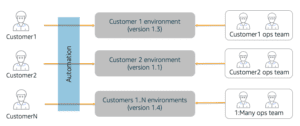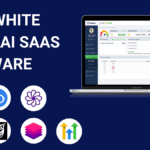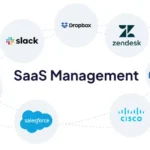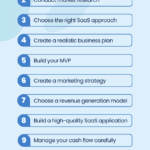SaaS (Software as a Service) provides software over the internet. Managed services involve outsourcing IT operations and management.
SaaS offers users access to software applications via the internet, eliminating the need for local installations. It's ideal for businesses seeking cost-effective, scalable solutions with minimal IT involvement. Managed services, on the other hand, provide comprehensive IT support, from infrastructure management to cybersecurity.
These services ensure that all IT systems run smoothly, allowing businesses to focus on core activities. Both options cater to different needs; SaaS is more suited for software usage, while managed services deliver holistic IT management. Understanding their distinctions helps businesses choose the right solution for their specific requirements.
Introduction To Saas And Managed Services
SaaS stands for Software as a Service. It delivers software over the internet. Users access it via a web browser. No need to install or maintain software. SaaS providers handle everything. This includes updates and security. Examples include Google Workspace and Salesforce.
Managed Services involve outsourcing IT operations. A Managed Service Provider (MSP) takes care of your IT needs. This includes monitoring, management, and problem-solving. The goal is to improve operations and cut expenses. MSPs offer services like network management, data backup, and cybersecurity. They work on a subscription basis, ensuring continuous support.
Key Characteristics Of Saas
SaaS uses a subscription model. Users pay monthly or yearly fees. This model helps manage budgets. No big upfront costs are needed. It is easy to start and stop using the service.
SaaS applications run in the cloud. Users can access them anywhere with internet. This makes it flexible and convenient. There is no need for local installations. Updates happen automatically online.
Vendors handle all maintenance tasks. Users do not worry about updates. The vendor ensures security and performance. This saves time and reduces hassle. Users focus on their core tasks instead.
Key Characteristics Of Managed Services
Managed services offer customized IT support for every business. This means solutions fit the specific needs of the company. This helps in solving unique problems effectively. Managed services ensure that every issue is handled quickly.
With managed services, there is constant monitoring of systems. Issues are identified before they become big problems. This keeps the system running smoothly. The goal is to prevent downtime and improve efficiency.
Managed services foster a long-term relationship with the client. This partnership helps in understanding the business better. It leads to more effective IT strategies. This approach supports the company's growth and success.
.jpg?width=1920&height=1080&name=Four%20reasons%20to%20implement%20a%20SaaS%20Model%20(1).jpg)
Credit: www.bitlyft.com
Pros And Cons Of Saas
SaaS solutions are easy to set up and use. They require no hardware installation. Users can access them anywhere with the internet. These solutions are also cost-effective. Companies pay for what they need. Software updates happen automatically. This saves time and effort for users. SaaS solutions offer great scalability. Businesses can scale up or down based on needs. This flexibility helps in managing resources efficiently.
Dependence on the internet is a major limitation. Without internet access, SaaS solutions won't work. Data security is another concern. Sensitive data is stored on cloud servers. Customization options are often limited. Businesses may not get tailored features. Integration with existing systems can be tricky. Compatibility issues may arise. Finally, unexpected costs can occur. Overuse can lead to higher expenses.
Pros And Cons Of Managed Services
Managed services offer consistent support and proactive maintenance, reducing downtime. SaaS provides scalable solutions with less management overhead. Managed services might be costlier than SaaS.
Benefits Of Managed Service Providers
Managed Service Providers offer round-the-clock support. They handle maintenance tasks for you. This ensures your system is always up-to-date. Another benefit is cost savings. You can save money on hiring in-house staff. Managed services provide expert knowledge. They have specialists in different fields. This improves your system's performance.
Potential Drawbacks
Using Managed Services can have some drawbacks. One issue is less control over your system. You rely on the provider's schedule. Another concern is potential security risks. Sharing data with a third party can be risky. Managed services might also have higher costs over time. If you need custom solutions, it can get expensive.
Cost Comparison
SaaS often uses a subscription model. Users pay monthly or yearly fees. These fees cover software updates and maintenance. Some SaaS products offer tiered pricing. Users can choose basic, standard, or premium plans. Each plan has different features and limits. There are no upfront costs with SaaS. This makes it affordable for many businesses.
Managed services often involve a contract. Businesses pay fixed monthly fees. These fees cover IT support and services. Contracts can be long-term or short-term. Managed services may have setup costs. These costs cover initial assessments and deployments. Some providers offer custom pricing based on specific needs. This makes managed services flexible but sometimes expensive.
Customization And Control
SaaS solutions offer limited customization. Users can adjust basic settings and choose from preset options. They do not need technical skills to make changes. SaaS providers handle updates and maintenance. This keeps the system running smoothly.
Managed services offer greater control. Businesses can tailor solutions to their needs. They can choose specific features and services. Managed service providers handle complex tasks. This includes system updates and security measures. Businesses can focus on core activities without worrying about IT issues.
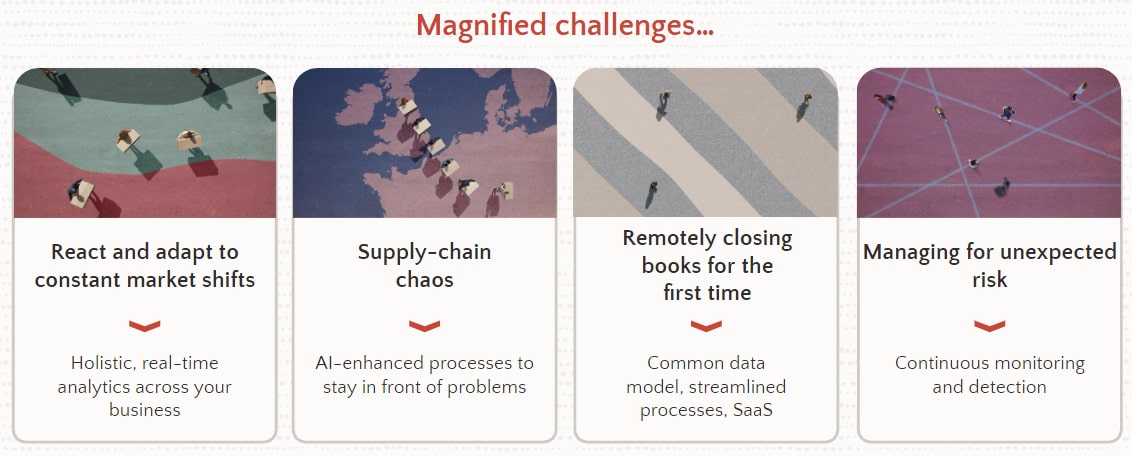
Credit: www.itconvergence.com
Security And Compliance
SaaS providers offer strong security measures. Data is encrypted both in transit and at rest. Regular security updates keep systems safe. Multi-factor authentication adds an extra layer of protection. Access controls are strict, only allowing authorized users. Built-in compliance with industry standards is common. Features like automatic backups ensure data safety. Threat detection systems monitor for suspicious activities.
Managed services help businesses meet compliance requirements. Experts handle all regulatory updates and changes. They offer customized security solutions tailored to specific needs. Continuous monitoring ensures systems stay compliant. Managed services include regular audits to check compliance. Detailed reporting provides insights into security status. Managed services reduce the risk of compliance violations.
Making The Decision
Choosing between SaaS and Managed Services depends on your business needs. SaaS offers scalable software solutions, while Managed Services provide personalized IT support. Evaluate your company's requirements to make an informed decision.
Assessing Your Business Needs
First, understand what your business needs. Are you looking for scalability or cost-effectiveness? Saas offers software on a subscription basis. Managed Services provide ongoing support and maintenance. Each option has its own benefits.
Evaluating Your It Infrastructure
Check if your current IT infrastructure can handle the change. Saas works well with cloud-based systems. Managed Services might need hardware updates. Make sure your team has the skills to manage the new system.
Long-term Business Goals Alignment
Align your choice with your long-term goals. Saas is great for flexibility and quick updates. Managed Services offer custom solutions and dedicated support. Think about what will help your business grow.
Real-world Examples
Many companies use SaaS to save money. Small businesses love SaaS for its ease. SaaS does not need big upfront costs. People can access SaaS from anywhere. Big firms also use SaaS for flexibility. A popular example is Google Workspace. It helps teams collaborate online. This makes work faster and easier. Another example is Salesforce. It helps manage customer relationships. These tools make business tasks simpler.
Managed services help companies focus on core tasks. They handle IT support and maintenance. One success story is a hospital using managed services. This helped them avoid IT issues. The hospital could focus on patient care. Another example is a retail company. They used managed services for network management. This improved their online sales. Managed services offer expert support and peace of mind.
Future Trends
New SaaS applications are being created every day. These apps help businesses work better. Many companies use AI and Machine Learning in their SaaS products. This makes the tools smarter and faster. Security features are also improving. This keeps data safe from hackers. SaaS tools are now more customizable. Users can change them to fit their needs.
Managed services are changing too. Cloud services are now very popular. They help businesses store and manage data easily. Remote monitoring tools are also more advanced. These tools help in finding issues before they become problems. Automation in managed services is growing. This reduces the need for manual work. Many services now offer 24/7 support. This helps businesses at any time of the day.

Credit: medium.com
Frequently Asked Questions
Is Managed Service The Same As Saas?
No, managed services and SaaS are different. Managed services offer ongoing IT support, while SaaS provides software via the cloud.
Is Saas The Same As Msp?
No, SaaS (Software as a Service) and MSP (Managed Service Provider) are different. SaaS delivers software online, while MSP manages IT services.
What Is The Difference Between Managed Hosting And Saas?
Managed hosting provides dedicated server management services. SaaS delivers software over the internet without needing installation. Managed hosting focuses on server maintenance, while SaaS focuses on software accessibility and usability. Both offer different levels of control and support.
What Is The Difference Between Managed And As A Service?
Managed services offer full control and maintenance by a provider. As a service provides resources on demand with less oversight.
Conclusion
Choosing between SaaS and Managed Services depends on your business needs. SaaS offers flexibility and scalability. Managed Services provide personalized support and maintenance. Evaluate your requirements and budget to make an informed decision. Both solutions have their merits. The right choice will enhance your operations and drive growth.
